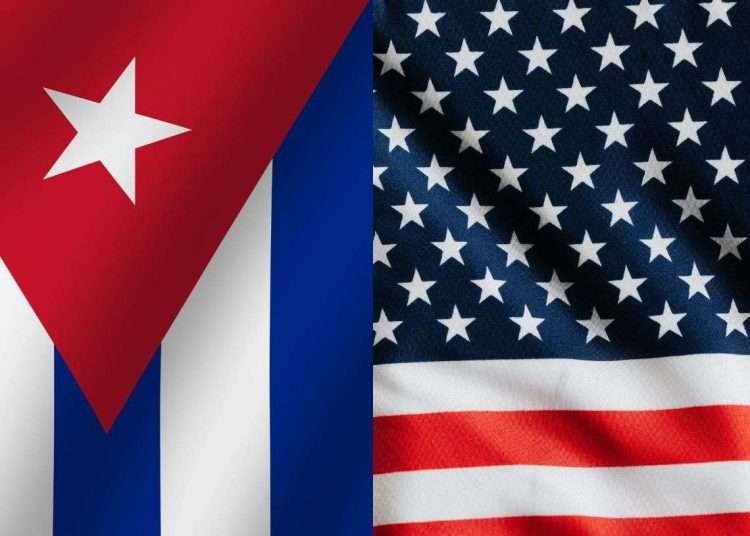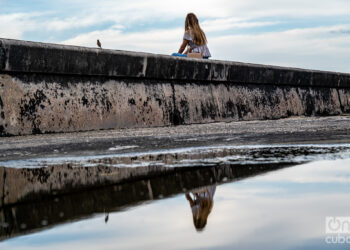The new measures of the Joe Biden administration mean good news for Cubans who want to leave the country, although they are not so good news for the Cuban nation. Some 260,000 Cubans entered the United States through the southern border in fiscal year 2022 alone, more than double the number that arrived through Mariel 40 years ago. And recently, with the reopening of the U.S. consular services in Havana, the quota of 20,000 annual visas negotiated by the two governments in 1994-1995 and suspended by Donald Trump in 2017 has returned.
The cause or the pretext was the so-called Havana Syndrome, a strange ear condition that affected several diplomats in the Cuban capital. The syndrome was never fully understood or explained by experts, but in their narrative they included as a cause both a terrible Russian secret weapon and the sound of crickets when they seek mating in the summer.
The fact is that the U.S. consular services are reopening, and with steroids, since Cuba is part of the four beneficiary countries that will receive 30,000 monthly entries to the United States. Thus, Cubans will have at least 90,000 visas per year which, added to the 20,000 mentioned above, result in 110,000 entries into the United States.
What does that mean for Cuba? What reception does this development have in Miami?
In Cuba, the population is decreasing, urbanizing and aging, according to an IPS news agency report that establishes a negative growth of 6.1%, which includes the people who left the country in 2021, with only 169 definitive departures abroad. Small amount compared to other sources.
The result in the Cuban population balance, which considers the increasing aging as essential, added to the possible 110,000 people abandoning the country per year ― mainly young and educated in Cuba ― constitutes another hard obstacle for the national economic development, in the moments of a serious crisis, created both internally and externally: on the one hand, the deficient Cuban economic policy and, on the other, the inclusion of Cuba in the list of countries that sponsor terrorism and the tightening of the U.S. trade embargo.
On the other hand, in Miami, the main enclave of Cubans in the United States, there is a peculiar silence on this issue. The press media do not reflect the same triumphant reactions from the exile that have been seen in the past, when other massive arrivals of Cubans occurred, such as that of the rafters in 1994, nor for the change in Washington’s policy on the granting of visas.
It is argued that these Cubans who are arriving are “something else,” “different” from us and it is criticized that the Biden administration has restarted talks with Havana. There is legal emigration, there is no scandal, there is no confrontation with the Cuban government, so there is no victory. This, without evaluating other sociopolitical implications of the new influx.
A very recent request from Florida senators Rick Scott and Marco Rubio to President Biden to prioritize human rights in the “new dialogue” with Cuba, evidences the existence of said negotiating plan.
On Wednesday the 18th, three senior U.S. officials arrived in Havana on behalf of President Biden for talks in Havana: Deputy Assistant Attorney General of the Department of Justice Bruce Swartz; Director, Latin American and Caribbean Affairs at U.S. Department of Homeland Security Alex Alemán, and coordinator of Cuban Affairs of the Department of State Karin Lang.
Changes are expected to continue. They will not be a continuation of the “thaw” of Barack Obama, but there will be warmer waters.
The appointment of former Democratic Senator Chris Dodd as Presidential Assistant for Latin America is a significant sign. In the past, Dodd has spoken out against the trade embargo. But with the present in view, what can we expect from relations between the two countries?
First, the suspension of the Cuban Adjustment Act, which according to lawyer José Pertierra, a specialist based in the United States, can be dismissed by President Biden, since it is not subject to a “mandatory regulation.” Is it to do with the two-year period of temporary permanence that is granted through sponsors?
In the event that said Adjustment Act ceased, those who entered with it would not have the right to stay in the United States and would have to return to Cuba. Therefore, if said dismissal is concordant, a presidential determination in this sense must be made in the coming months, before the year and one day that would entitle the first Cubans to arrive by this route to request their adjustment.
On the other hand, in a recent analysis carried out by a U.S. government agency, the economic sanctions imposed by the United States are pointed out as one of the main causes of the numerous Cuban emigrations. Primarily, Cuba’s permanence on the list of countries that sponsor terrorism.
Perhaps for this reason, both governments would be negotiating respective steps. A very possible give and take would be the elimination of Cuba from said list by Washington, after the release by the Cuban government of those sentenced to prison for the events of July 11, 2021.
The other, referring to the trade embargo, would be the granting of special licenses to U.S. citizens to export and set up means of production together with private enterprises on the island (MSMEs), as well as credit facilities for said enterprises. This would be an exception to the commercial embargo that partially places the matter between Cubans, on both sides of the wide Straits of Florida.
The words of Cuban Deputy Minister of Foreign Affairs Carlos Fernández de Cossío in a recent academic forum seem to refer to the above, and he said: “If exceptions to the blockade are introduced, with the dream of undermining the Revolution, we are not going to oppose…. If this allows for greater prosperity in any sector of the Cuban economy, we are not going to put obstacles in the way. If it manages to conceive exceptions that benefit some and continue to punish others, we are not going to try to prevent it either. But it makes a major mistake in political terms in trying to promote the private sector as a weapon to undermine the nature of Cuban society.”
Surely, as in all negotiations between conflicting states, both will have to give in in favor of a profitable agreement. William Leogrande has said that the time for the negotiations is now. We will see if they are willing to give in, and to what extent. Cuba is waiting.











